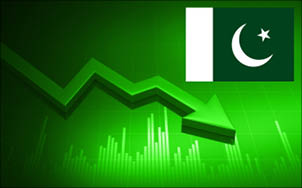The ongoing economic crisis in Pakistan is the result of political chaos of last year that saw the removal of the government by a vote of no confidence in 2022 by Pakistan’s parliament, and the resulting disturbance in the nation made a political drama. The country fell into an economic crisis with severe inflation that has been predicted to stay at 33% during the first half of 2023, and the World Bank, during the first week of April, projected about 4 million Pakistanis falling below the lower-middle-income i.e. $3.6/day. The ramshackle economy is surely problematic, and the country is depending on a few hopes to solve the crisis.
The IMF deal and friendly help from other countries:
The IMF favours expenditure controls, better tax administration, and an end to subsidies and export tax rebates that favour larger firms and cartels. The Pakistani rupee has lost ground to the US dollar, fueled to some extent by the flooding interest in sneaking of dollars in adjoining Afghanistan. Minister Dar probably failed in his insight as he anticipated a strong rupee even before he returned to Pakistan from his perch in London. Dar undercut former finance minister Miftah Ismail, who gave off an impression of being hopeful about an agreement with the IMF in June 2022. The IMF deal didn’t occur, and Ismail was terminated not long after Dar arrived in Pakistan. Islamabad has been haggling with the IMF since early February to get $1.1 billion aid as a component of a $6.5 billion rescue program agreed in 2019. The IMF inflows still didn’t appear until late March 2023, and April has become the cruellest month for Pakistan as there are scenes of the IMF deal falling through and a government debt default occurring.
US President Joe Biden has proposed to double the economic support fund to the emergency-hit Pakistan to USD 82 million for 2024 to help its recuperation from wrecking floods, enhance the energy supply, and development projects. The budget proposes to give Pakistan USD 82 million for 2024, starting in October, under the Economic Support Fund plan. The help was USD 39 million back in 2022. Presently, the debt-trapped Pakistan government is in a race against time to carry out measures to agree with the IMF, as the nation supposedly has reserves scarcely enough. The agreement with the IMF on the completion of the ninth review of a USD 7 billion loan Extended Fund Facility program, which has been deferred since before the end of last year over a policy structure, wouldn’t just prompt a payment of 1.2 billion but also open inflows from friendly nations. Economically in shackles, Pakistan has gotten the gesture for subsidising an extra USD 2 billion from Saudi Arabia, a move that will assist the country with getting the much-required help from the IMF. The Saudi leadership is set to make a public announcement, probably during the upcoming visit of Prime Minister Shahbaz Sharif to the Kingdom. Pakistan’s administration is also presently restlessly standing by to get help from the UAE on an extra USD 1 billion reserve for moving towards a staff-level agreement with the IMF. The help from Riyadh comes at a critical time as the IMF program, signed in 2019, will lapse on June 30, 2023, and under the set rules, the program can’t be extended past the deadline. Last month, Pakistan got a rollover credit of USD 2 billion from it’s all-time ally China, which would help shore up its depleting foreign exchange reserves.
What needs to be done?
Pakistan is currently finding itself on the verge of a dystopian situation, being at risk for a long time now.The red flags have existed, be it in terms of abysmal ranking in Worldwide Governance Indicators or the Fragile States Index. The economy is surely in a bad position with businesses and industries closing and inflation rising beyond a bearable point, and the banks in the country are also in a bad-case scenario. As a recent action, Pakistan has shut down some Chinese businesses in Karachi as “preventive” measures for the deteriorating security situation. There have been suppositions that China is encroaching in the name of commercial projects and other financial investments. With such challenges across the front, the question is can something be done to turn around the situation, or is it too late? The dependence can be made on a return to constitutional rule and a neutral setup, but the answer revolves around what needs to be done rather than do steps up at the political front. The solution window has surely become narrower, and a chain of crises can be expected to have undesirable consequences. An IMF deal is surely what Pak needs; however, domestic analysts believe the government will find matters tough, as the IMF is likely to demand significant belt-tightening that is bound to be unpopular, with voters already grappling with decades-high inflation and fewer job prospects. If the disbursements do not arrive by June, there could be a six-month gap before the new government takes office, during which Pakistan would be starved of funds, effectively pushing its population to the brink.
Sharanpreet Kaur is an Assistant Professor of International Relations at the School of Social Sciences, Guru Nanak Dev University, Amritsar. She has done her Masters in International Relations from Jawaharlal Nehru University, New Delhi, and her core area of research is Indo-US Nuclear and Defence Cooperation. Sharanpreet writes on issues related to India’s foreign policy, Diplomacy, the politics of South Asia, Central Asia, and West Asia.

